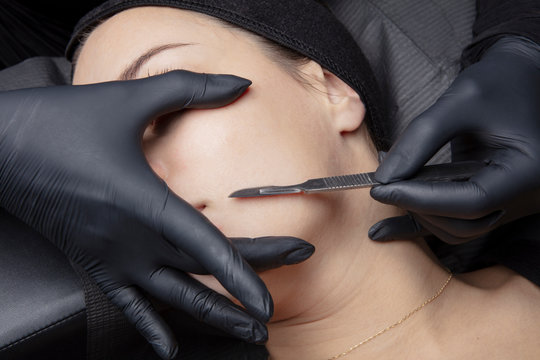Your cart is currently empty!
Dermaplaning: What It Is, Side Effects, And More

Simply addressing “What is Dermaplaning,” Dermaplaning is a skincare procedure that removes peach fuzz and vellus hairs (dead skin cells) using a sharp blade. This results in skin that is shinier and smoother, and it may also make it simpler to apply moisturizer and makeup. Typically, a dermatologist, plastic surgeon, or esthetician performs dermaplaning. No downtime is necessary after it; it only takes a few minutes.
What To Expect from Dermaplaning Treatment?
There is no need to schedule any downtime to recover from dermaplaning. In the first two to three days following the operation, you can suffer redness or the sensation that your skin has been scrapped.
What does Dermaplaning do? Immediately following a dermaplaning procedure, you could notice that your skin appears brighter, but it usually takes a few days to get the full effects. In the days that follow, you’ll be able to notice the benefits more clearly as any redness fades.
Dermaplaning results last. According to the technique, up to three weeks’ worth of dead skin cells can be removed. Your results will have diminished after three to one month.
After receiving dermaplaning treatment, you should exercise caution while sun exposure. Dermaplaning could be undone by sun exposure, which could leave pigment blotches on your newly exposed skin cells. Don’t leave the house without applying sunscreen to your face in the weeks following a dermaplaning procedure.
Benefits of Dermaplaning
Dermaplaning provides several advantages. One is that it removes the top layer of dead skin cells from your skin, exfoliating it (called the stratum corneum). Your skin normally exfoliates on its own, but as you age, this process becomes slower. By removing some of those other dead skin cells, dermaplaning is beneficial.
Dermaplaning also removes your face’s tiny baby hairs (vellus hair). This kind of hair is prevalent. However, for some people, it’s more obvious and unpleasant (like for people with dark hair).
Your skin can benefit from these impacts in several ways:
- Skin feels softer and more refined;
- Moisturizer is absorbed more readily, and the skin looks brighter. Makeup applies more evenly (no caking);
- Reduced visibility of tiny lines;
- May lessen upcoming acne outbreaks
Possible Side Effects of Dermaplaning
Is dermaplaning good for your skin? Dermaplaning is a procedure with minimal risk. Your face may appear a little red in the hours following the procedure as a side effect. After having their skin dermaplaned, some people have a few days of whitehead development.
After dermaplaning, scarring and infections are uncommon, but they can happen. Another potential side effect is patchy skin pigmentation in the treated area, which may fade or vanish with time. Here are some additional potential dermaplaning adverse effects:
- Mild bruising following the surgery;
- Being slashed by the sword, which could leave scars;
- Infection danger;
- Skin coloration (lighter or darker than the surrounding skin);
- Temporarily more sun-sensitive.
How Long Do the Results of Dermaplaning Last?
The effects of dermaplaning remain for 20 to 22 days after the dead skin has been successfully removed from your body. It does so for three weeks following the surgery. This will be discouraging for some who have been trying to look nice for months. Though this will treat you, you won’t regret the therapy because it consistently produces 100% outcomes for its clients.
You won’t experience any skin damage by performing this facial on your face and skin, and there is no waiting period for recovery.

Leave a comment